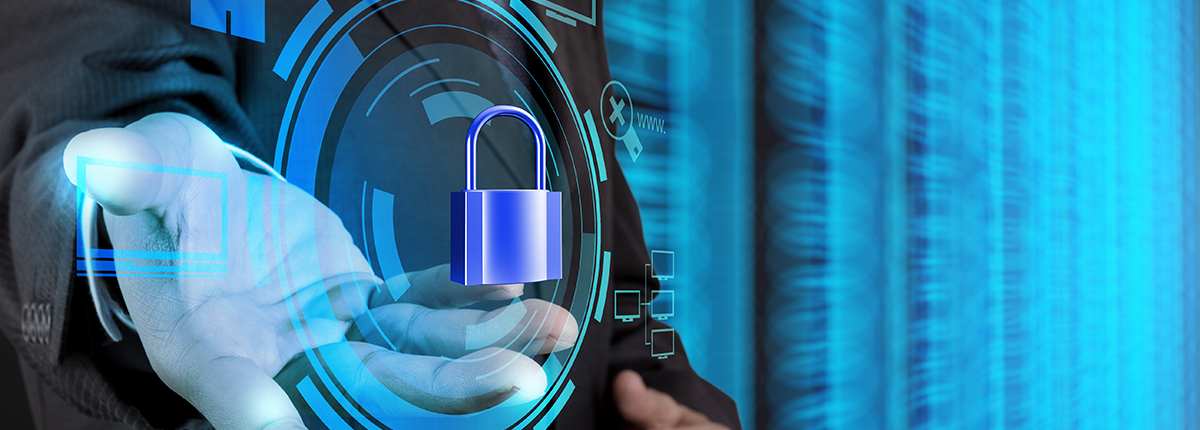Mastering Corporate Security: Proven Techniques for Company Protection
Mastering Corporate Security: Proven Techniques for Company Protection
Blog Article
From Cybersecurity to Physical Steps: Enhancing Corporate Protection in an Altering World
By integrating the strengths of both cybersecurity and physical security, business can produce a thorough protection approach that attends to the varied array of hazards they encounter. In this conversation, we will certainly discover the transforming danger landscape, the need to integrate cybersecurity and physical protection, the application of multi-factor authentication steps, the significance of employee awareness and training, and the adaptation of safety procedures for remote labor forces. By examining these key areas, we will certainly get valuable insights right into exactly how organizations can reinforce their company safety in an ever-changing world.
Understanding the Altering Danger Landscape
The developing nature of the modern globe necessitates an extensive understanding of the transforming risk landscape for effective corporate safety and security. In today's interconnected and digital age, risks to company protection have become a lot more complex and advanced. As innovation advances and organizations end up being progressively reliant on electronic infrastructure, the capacity for cyberattacks, information breaches, and other safety breaches has significantly raised. It is important for companies to remain educated and adapt their safety measures to resolve these advancing risks.
One key aspect of understanding the transforming danger landscape is identifying the various kinds of dangers that companies encounter. Additionally, physical threats such as burglary, criminal damage, and company reconnaissance continue to be widespread worries for companies.
Tracking and examining the risk landscape is vital in order to identify potential threats and susceptabilities. This includes staying upgraded on the most recent cybersecurity patterns, evaluating risk knowledge reports, and carrying out routine threat analyses. By comprehending the changing hazard landscape, organizations can proactively execute appropriate protection procedures to reduce risks and shield their properties, track record, and stakeholders.
Integrating Cybersecurity and Physical Security
Integrating cybersecurity and physical safety is vital for extensive business protection in today's digital and interconnected landscape. As companies progressively count on modern technology and interconnected systems, the boundaries in between physical and cyber threats are ending up being blurred. To effectively secure versus these dangers, a holistic strategy that combines both cybersecurity and physical safety measures is crucial.
Cybersecurity focuses on shielding digital assets, such as data, systems, and networks, from unauthorized accessibility, disruption, and theft. Physical protection, on the other hand, incorporates actions to protect physical assets, individuals, and centers from threats and vulnerabilities. By incorporating these two domain names, companies can deal with vulnerabilities and dangers from both physical and digital angles, thus enhancing their total safety and security stance.
The integration of these 2 self-controls enables a more comprehensive understanding of safety and security dangers and enables a unified action to occurrences. As an example, physical accessibility controls can be boosted by incorporating them with cybersecurity protocols, such as two-factor authentication or biometric recognition. In a similar way, cybersecurity steps can be complemented by physical security procedures, such as monitoring cameras, alarms, and secure gain access to factors.

Carrying Out Multi-Factor Authentication Steps
As organizations increasingly prioritize thorough safety and security procedures, one reliable strategy is the execution of multi-factor verification procedures. Multi-factor verification (MFA) is a protection approach that needs users to give multiple types of recognition to access a system or application. This method includes an extra layer of security by integrating something the individual understands, such as a password, with something they have, like a finger print or a safety and security token.
By carrying out MFA, organizations can considerably improve their protection position - corporate security. Traditional password-based verification has its limitations, as passwords can be easily compromised or neglected. MFA alleviates these next page dangers by including an extra authentication element, making it harder for unauthorized individuals to get to sensitive information
There are numerous kinds of multi-factor verification approaches readily available, including biometric verification, SMS-based confirmation codes, and hardware symbols. Organizations need to examine their details demands and choose the most appropriate MFA solution for their demands.
Nevertheless, the execution of MFA should be carefully planned and performed. It is essential to strike a balance between security and use to avoid customer stress and resistance. Organizations must likewise consider prospective compatibility issues and provide sufficient training and support to make certain a smooth shift.
Enhancing Employee Awareness and Training
To enhance business safety and security, organizations should prioritize improving staff member recognition and training. Several safety breaches take place due to human error or lack of recognition.
Effective staff member recognition and training programs should cover a wide variety of subjects, consisting of data security, phishing strikes, social engineering, password health, and physical security actions. These programs need to be customized to the specific demands and responsibilities of different staff member functions within the company. Normal training simulations, sessions, and workshops can assist workers develop the necessary skills and understanding to identify and react to protection threats properly.
Additionally, companies need to urge a society of safety and security awareness and offer continuous updates and tips to maintain workers educated regarding the most recent threats and mitigation strategies. This can be done through internal interaction networks, such as newsletters, intranet websites, and e-mail campaigns. By fostering a security-conscious workforce, companies can considerably lower the chance of security events and shield their useful properties from unauthorized access or concession.

Adapting Safety Steps for Remote Labor Force
Adjusting business protection measures to accommodate a remote workforce is vital in ensuring the security of sensitive info and possessions (corporate security). With the enhancing pattern of remote job, organizations must carry out appropriate safety and security measures to minimize the dangers connected with this new way of functioning
One vital element of adapting safety and security procedures for remote work is developing safe and secure interaction networks. Encrypted messaging platforms and online exclusive networks (VPNs) can help safeguard delicate info and protect against unapproved access. In addition, organizations must apply making use of solid passwords and multi-factor authentication to improve the safety and security of remote accessibility.
An additional vital consideration is the implementation of safe and secure remote accessibility options. This involves supplying employees with secure access to corporate sources and information via online desktop facilities (VDI), remote desktop computer protocols (RDP), or cloud-based remedies. These innovations make sure that delicate info continues to be protected while enabling employees to do their duties successfully.

Lastly, extensive safety recognition training is critical for remote workers. Educating sessions must cover ideal practices for securely accessing and managing delicate information, identifying and reporting phishing attempts, and preserving the overall cybersecurity hygiene.
Final Thought
To conclude, as the hazard landscape remains to progress, it is essential for organizations to strengthen their safety and security determines both in the cyber and physical domains. Integrating cybersecurity and physical safety and security, carrying out multi-factor verification procedures, and improving employee understanding and training are necessary actions in the direction of accomplishing robust corporate security. Additionally, adapting security measures to fit remote labor forces is imperative in today's transforming globe. By applying these you could try these out steps, organizations can mitigate dangers and protect their beneficial properties from prospective risks.
In this conversation, we will certainly explore the changing threat landscape, the demand to integrate find out here now cybersecurity and physical protection, the application of multi-factor verification procedures, the value of employee understanding and training, and the adaptation of safety actions for remote labor forces. Cybersecurity measures can be matched by physical security procedures, such as surveillance cameras, alarm systems, and secure gain access to factors.
As organizations increasingly focus on extensive safety measures, one efficient strategy is the execution of multi-factor verification actions.In conclusion, as the danger landscape proceeds to progress, it is vital for companies to strengthen their safety and security gauges both in the cyber and physical domain names. Incorporating cybersecurity and physical security, executing multi-factor verification actions, and enhancing employee recognition and training are vital actions in the direction of attaining robust business security.
Report this page